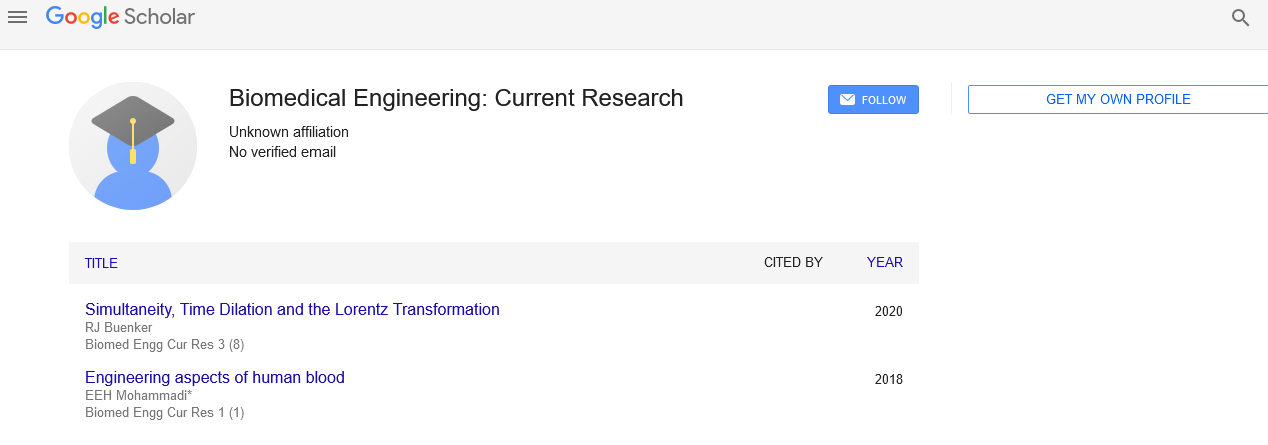Biomonitoring of particles
Received: 04-Aug-2022, Manuscript No. pulbecr-22-5694; Editor assigned: 06-Aug-2022, Pre QC No. pulbecr-22-5694 (PQ); Accepted Date: Aug 25, 2022; Reviewed: 20-Aug-2022 QC No. pulbecr-22-5694 (Q); Revised: 21-Aug-2022, Manuscript No. pulbecr-22-5694 (R); Published: 27-Aug-2022, DOI: DOI:10.37532/PULBECR .2022.4(4).30.
Citation: Ferguson L. Biomonitoring of particles. J Biomed Eng: Curr Res. 2022;4(4):30.
This open-access article is distributed under the terms of the Creative Commons Attribution Non-Commercial License (CC BY-NC) (http://creativecommons.org/licenses/by-nc/4.0/), which permits reuse, distribution and reproduction of the article, provided that the original work is properly cited and the reuse is restricted to noncommercial purposes. For commercial reuse, contact reprints@pulsus.com
Abstract
Using biomonitors, which provide time-integrated measurements of the parts of the total ambient metal load that are directly relevant to ecotoxicology, it is possible to identify regional and/or temporal variations in the bioavailability of heavy metals in the marine environment. Heavy metal biomonitors must meet a number of specifications, not the least of which is that they must be metal accumulators. Recognition of the presence and relative magnitude of various metal sources is made possible by the use of a variety of biomonitors. To enable intra-specific comparisons of bioavailabilities between geographical locations, it is necessary to find extensive global biomonitors. The alga Ulva Lactuca, the mussels of the genera Mytilus and Perna, the oysters Ostrea and Crassostrea, the barnacles Balanus amphitrite and Tetraclita squamosa, and the talitrid amphipod Platorchestia platensis are examples of such global biomonitors. The requirement for accurate, precise taxonomic identification continues to be a significant caution in the deployment of such global biomonitors
Key Words:
Biomonitoring; Heavy particles; Physiologic monitoring
INTRODUCTION
The term "biomonitoring," short for "biological monitoring," is used in the field of environmental public health to describe the measur- -ement of an environmental chemical, its metabolite(s), or reaction product(s), in human blood, urine, milk, saliva, adipose, or other tissue in individuals taken separately but typically taken together to constitute a population, in order to assess human exposure to that chemical. It was discovered, for instance, that the general population of industrialized nations was exposed to lead to a level that necessitated rapid action using atomic absorption spectroscopy. Because of this, the lead content of gasoline was decreased, and for the first time, HBM was utilized in extensive population studies to measure blood lead levels and monitor the effectiveness of the interventions made. Heart rate, pulse waveform, respiration rate, tissue pCO2, exhaled carbon dioxide, physical activity, the strain on orthopedic devices, intracorporal pressure, and gastrointestinal lumen visibility are among the measures that can be taken. The transistor, a then-new piece of technology, was employed in wireless communications techniques as early as 1957 to measure pH and temperature from internal cavities. The applications of biomonitoring are numerous. The International Life Sciences Institute/Health and Environmental Sciences Institute (HESI) subcommittee on Biomonitoring has created a wheel with biomonitoring at the center. Applications for biomonitoring are shown in numerous spokes projects from the hub. These spokes ultimately connect to the inner wheel, indicating that information from these "spokes" may be utilized to measure exposure or investigate potential adverse effects or risks to health. Applications of these data are better defined by the outer wheel. The creation of reference ranges and the gathering of information on spatial and temporal trends are two of the spokes leading to exposure assessment.
CONCLUSION
The HESI wheel and the several recent symposia and workshops on the subject both demonstrate the wide range of applications for biomonitoring in environmental public health. The interpretation of the law, particularly when it involves nonpersistent compounds, may be the most problem. We must also be aware that the objectives of the study for which biomonitoring is being undertaken, or the study design, have a significant role in its proper usage and interpretation. The population type may be determined by the study's design.
The FCC's rules are altering to accommodate the demands of medical short-distance communication while the radio spectrum constraints continue to create certain restrictions. A significant power supply restriction still affects engineering design. Practical solutions include repeater utilisation, LAN networks with more power, and reduced duty cycle. These readings will become more accurate and dependable thanks to wireless telemetry, and in some circumstances, this will enhance healthcare while significantly lowering costs.





